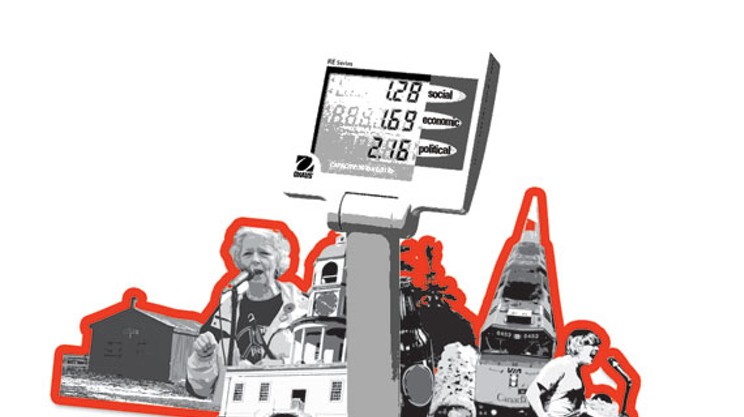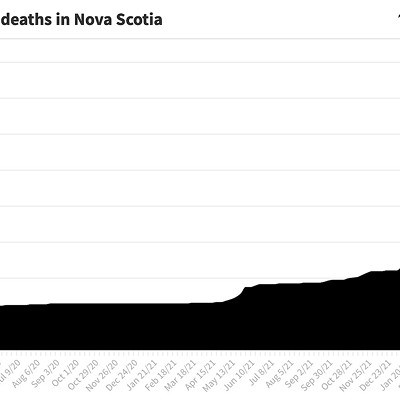Ron Colman's life work is complete. For 12 years, Colman has been leading GPI Atlantic, a Halifax think tank that seeks to redefine how we value our society. Over those dozen years, the organization has published 100 separate detailed analyses of how Nova Scotians live and work, and those analyses have been integrated into a massive database published last week as The 2008 Nova Scotia Genuine Progress Index.
The publication is the first of its kind anywhere in the world, and brings a revolutionary approach to how government measures things and decides where resources are directed. It's an approach that could help save the planet and human society and, to everyone's great surprise, the provincial government is taking it seriously, to the point of funding the effort with $188,000in grants.
"I'm realizing how powerful these indicators are," says Colman. "If you don't count something, it doesn't get attention. Literally, it shapes the policy agenda of government; what's measured and counted is whatgets attention."
Colman explains the Genuine Progress Index with a metaphor. "We would not feel comfortable if the pilot of our airplane were flying with only one gauge---if we told the pilot only the altitude of the plane. We also would want the pilot to have a little more information, or all you would end up doing is flying at 30,000 feet. You couldn't do anything else."
But, he continues, that's exactly what we've been doing to measure the state of our economy; we use the gross domestic product, which tells us only if and by how much the economy is growing. "But it's not a good gauge to make policy; it's not a good way to get your passengers to their destination. To pilot the plane, to pilot the province in the direction we need to go, we need a broad range of measures: We need to know how we're doing on a broad range of economic, social and environmental criteria."
The single GDP economic measure has failed us, explains Colman. We measured increasing fish sales and deemed the fisheries a success---but like a pilot without a fuel gauge, we were unaware of the declining health of the fisheries and they came crashing down. We saw increasing consumer spending as an unmitigated positive---but by ignoring snowballing debt founded in artificially inflated home values, we were unprepared for the recent financial collapse.
Avoiding such catastrophe means looking at, and measuring, the entire system. The GPI looks at 20 broad categories, including income distribution, safety, air quality, transportation and so forth. Within each category is a range of indicators. In "soils and agriculture," for example, GPI examines not only the traditional measure---net farm income, which has in recent years become a negative number---but also measures giving an indication of the long-term health of farmland, like the intensity of synthetic fertilizer use and the amount of farmland covered with forests that protect against erosion. All together, the agricultural indicators point to an industry that is in crisis, akin to where fisheries were before they collapsed.
Nova Scotia adopted the GPI thanks to what Colman calls "the school of hard knocks. We were hit by Hurricane Juan and people asked, well, the water in the Atlantic was three degrees warmer that year than the year before, so could there be a connection to climate change? The collapse of the fish stocks---we're starting to realize there's a major economic cost in ignoring that."
Such thinking led last year to the enactment of the ground-breaking Environmental Goals and Sustainable Prosperity Act, which mandates the province meet broad economic and environmental benchmarks.
Still, for all the clear thinking that went into the Act, it's unlikely an important short-term goal---the introduction of California auto emission standards by 2010---will be met, and it appears increasingly unlikely the province will meet its much-celebrated long-term greenhouse gas emission goals.
"That's right," says Colman. "The jury's out. It's one thing to express the intention, and of course that's a great start because without the motivation and intention you don't get anywhere. But whether the actions are going to follow is a big question."
















